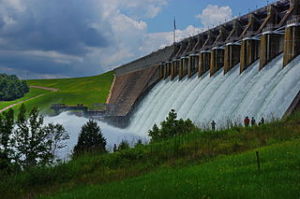Dams can benefit society—and harm river ecosystems. Listen up for why it’s important to balance the good with the bad:

A giant dam can be a real game-changer to the ecosystem—but so can a small one. (via U.S. Army Corps of Engineers)
Dams can create a reservoir to hold water, protect areas from floods, or generate clean electricity. All good, right?
But wait, there’s more: A dam also physically blocks migrating fish and changes the overall biology of the life in the river by changing the natural water flow.
So, what makes a dam “good”? Laura Wisland, senior energy analyst from the Union of Concerned Scientists, says it’s not the size of the dam that matters.
“A larger dam that creates ways for fish passage and releases water with a flow cycle that mimics the natural flow cycle—that could end up having much fewer environmental impacts than a smaller dam that’s poorly managed,” she explains.
How to strike the right balance? It’s all about thoughtful design and management when it comes to minimizing environmental risks.
Get schooled:
- Read about the how hydroelectric power is damaging rivers worldwide, via Forbes
- Check out International Rivers’ interactive State of the World’s Rivers, which illustrates the effects of dam-building
- Learn more about hydroelectric power’s environmental impact from Union of Concerned Scientists
The fine print:
- This segment was produced in partnership with Cornell’s Atkinson Center for a Sustainable Future




